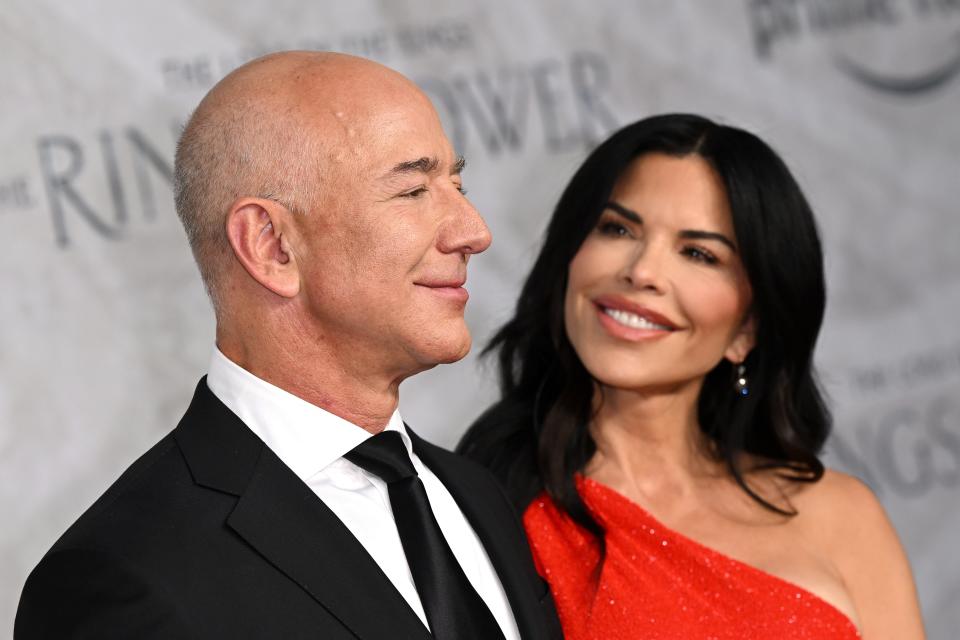The top 1% of American earners now own more wealth than the entire middle class
The top 1% of American earners now control more wealth than the nation’s entire middle class, federal data show.
More than one-quarter of all household wealth, 26.5%, belongs to Americans who earn enough money to rank in the top percentile by income, according to Federal Reserve statistics through mid-2023.
The top 1% holds $38.7 trillion in wealth. That’s more than the combined wealth of America’s middle class, a group many economists define as the middle 60% of households by income. Those households hold about 26% of all wealth.
Low-income Americans, representing the bottom 20% by income, own about 3% of the wealth.

The top 1% overtook the middle class in collective wealth in 2020
Thirty years ago, America’s celebrated middle class commanded twice as much wealth as the upper 1%.
Over the years, the rich have grown steadily richer. The top 1% caught and passed the middle class in collective wealth in late 2020, Fed data shows.
The wealth lead has changed hands since then, but the 1%-ers have it now, and their margin is growing.
“The number of deca-millionaires has more than doubled since 2000, and the number of centi-millionaires has quadrupled,” said Owen Zidar, a Princeton University economist, referring to people worth more than $10 million and $100 million, respectively.
And who are the top 1%? The category includes flashy billionaires Jeff Bezos and Elon Musk, of course. But many 1%-ers are low-profile multimillionaires, living quietly among us.
"As you go up the wealth distribution, it's more and more these private business owners," Zidar said. "And a lot of them are boring businesses. Auto dealers. Beverage distributors. People who own seven Jiffy Lubes."
Why the rich keep getting richer, compared to everyone else, is a topic of recurring debate among the nation’s economists.
“If there were a good answer to that question, I think the policymakers in Washington would be all over it to fix it,” said Scott Hoyt, senior director for Moody's Analytics.
Instead of one answer, there seem to be several:
Real estate: The upper 1% controls 12.9% of real estate wealth in 2023, up from 8.1% at the start of 1990, Fed data show. The average home price has more than tripled in that span.
Stocks: The top 1% holds close to half of all corporate equities and mutual fund shares in 2023, according to the Fed. As recently as 2003, their share of the equities pie fell below 30%.
Owning a private business: The upper 1% owns nearly half of all private-company wealth today, up from about 30% in 1990, the Fed reports.
Stocks and home prices soared in the low-interest years that followed the onset of the Great Recession in 2008.
“People who owned homes, who owned stocks, who owned retirement accounts, they did very well,” Princeton's Zidar said. “And a lot of people don’t own homes, and a lot of people don’t own stocks, so they missed out on that opportunity.”

Is the concentration of wealth bad for America?
Just as economists don’t all agree on what is causing the rich to get richer, there is no consensus that the concentration of wealth is bad for the rest of America.
The middle class isn’t necessarily getting poorer, income data shows: They’re just not getting richer as fast as the rich.
Between 1979 and 2021, the wages of Americans in the top 1% grew by 206%, after adjusting for inflation, according to an analysis by the nonprofit Economic Policy Institute. In the same years, wages for the bottom 90% grew by only 29%.
“If a rising tide is lifting all boats, but just lifting some boats more than others, that’s one thing,” Hoyt said. “If the playing field is tipping, and some people are getting more wealthy, and some are getting less wealthy, that’s another story.”
Nonetheless, many economists say the growing concentration of wealth bodes ill for the nation as a whole.
The stagnation of wages and wealth among middle-class Americans, experts say, feeds a growing sense of economic ennui. Middle-class Americans have reason to fear for their economic future.
“When people feel like they don’t have a chance, or perhaps even more dangerously, when they feel like their kids don’t have a chance . . . that inequality of opportunity is what really gets people upset,” said John Friedman, chair of the economics department at Brown University.
Stagnant wealth hinders middle-class Americans from getting a top-drawer education, starting a business, or landing a high-wage job, said Zidar of Princeton.
“It’s really bad for the growth of the country if a small number of people whose parents happen to be rich are the ones who do well,” he said.
What, then, is a middle-class American to do?
Middle-income Americans may not have millions of dollars to invest, economists say, but they can still reap some of the economic opportunities available to the top 1%.
One tool is homeownership. The middle class still owns nearly two-fifths of the nation’s real estate, an asset group that the super-rich have leveraged to get richer, federal data show.
Another strategy is stocks.
Depleted savings: Worried about running out of money in retirement? These tips can help
The middle class owns only about 12% of all corporate equities and mutual fund shares.
Yet, because people can build a 401(k) or trade over a phone, “it’s kind of easier than ever to invest in a broad swath of assets,” through mutual funds and other pooled investments, Brown's Friedman said.
The last and best economic tool available to the middle class, Friedman said, is education.
The modern economy rewards high-skilled workers, who cannot be easily replaced by a machine or algorithm, Friedman said.
“The returns from investing in education have never been higher,” he said. “If you ask what can really make a difference in a child’s trajectory, it’s having more education.”
This article originally appeared on USA TODAY: Middle class Americans own less wealth than the top 1%
